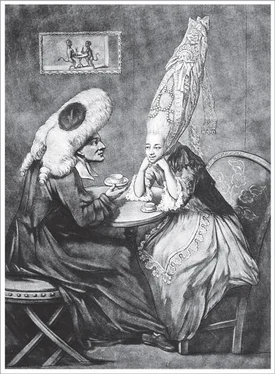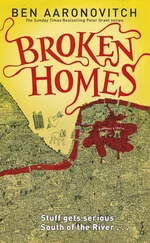Bill Bryson - At Home
Здесь есть возможность читать онлайн «Bill Bryson - At Home» весь текст электронной книги совершенно бесплатно (целиком полную версию без сокращений). В некоторых случаях можно слушать аудио, скачать через торрент в формате fb2 и присутствует краткое содержание. Жанр: Старинная литература, на английском языке. Описание произведения, (предисловие) а так же отзывы посетителей доступны на портале библиотеки ЛибКат.
- Название:At Home
- Автор:
- Жанр:
- Год:неизвестен
- ISBN:нет данных
- Рейтинг книги:4 / 5. Голосов: 1
-
Избранное:Добавить в избранное
- Отзывы:
-
Ваша оценка:
- 80
- 1
- 2
- 3
- 4
- 5
At Home: краткое содержание, описание и аннотация
Предлагаем к чтению аннотацию, описание, краткое содержание или предисловие (зависит от того, что написал сам автор книги «At Home»). Если вы не нашли необходимую информацию о книге — напишите в комментариях, мы постараемся отыскать её.
At Home — читать онлайн бесплатно полную книгу (весь текст) целиком
Ниже представлен текст книги, разбитый по страницам. Система сохранения места последней прочитанной страницы, позволяет с удобством читать онлайн бесплатно книгу «At Home», без необходимости каждый раз заново искать на чём Вы остановились. Поставьте закладку, и сможете в любой момент перейти на страницу, на которой закончили чтение.
Интервал:
Закладка:
A very big part of the history of the modern world is the history of spices, and the story starts with an unprepossessing vine that once grew only on the Malabar coast of southwestern India. The vine is called Piper nigrum . If presented with it in its natural state, you would almost certainly struggle to guess its importance, but it is the source of all three “true” peppers—black, white, and green. The little round, hard peppercorns that we pour into our household pepper mills are actually the vine’s tiny fruit, dried to pack a gritty kick.* The difference between the varieties is simply a function of when they are picked and how they are processed.
Pepper has been appreciated since time immemorial in its native territory, but it was the Romans who made it an international commodity. Romans loved pepper. They even peppered their desserts. Their attachment to it kept the price high and gave it a lasting value. Spice traders from the distant East couldn’t believe their luck. “They arrive with gold and depart with pepper,” one Tamil trader remarked in wonder. When the Goths threatened to sack Rome in 408, the Romans bought them off with a tribute that included three thousand pounds of pepper. For his wedding meal in 1468, Duke Karl of Bourgogne ordered 380 pounds of black pepper—far more than even the largest wedding party could eat—and displayed it conspicuously so that people could see how fabulously wealthy he was.
Incidentally, the long-held idea that spices were used to mask rotting food doesn’t stand up to much scrutiny. The only people who could afford most spices were the ones least likely to have bad meat, and anyway spices were too valuable to be used as a mask. So when people had spices they used them carefully and sparingly, and not as a sort of flavorsome cover-up.
Pepper accounted for some 70 percent of the spice trade by bulk, but other commodities from farther afield—nutmeg and mace, cinnamon, ginger, cloves, and turmeric, as well as several largely forgotten exotics such as calamus, asafoetida, ajowan, galangal, and zedoary—began to find their way to Europe, and these became even more valuable. For centuries spices were not just the world’s most valued foodstuffs, they were the most treasured commodities of any type. The Spice Islands, hidden away in the Far East, remained so desirable and prestigious and exotic that when James I gained possession of two small islets, it was such a coup that for a time he was pleased to style himself “King of England, Scotland, Ireland, France, Puloway and Puloroon.”
Nutmeg and mace were the most valuable because of their extreme rarity.* Both came from a tree, Myristica fragrans , which was found on the lower slopes of just nine small volcanic islands rising sheer from the Banda Sea, amid a mass of other islands—none with quite the right soils and microclimates to support the nutmeg tree—between Borneo and New Guinea in what is now Indonesia. Cloves, the dried flowerbuds of a type of myrtle tree, grew on six similarly selective islands some two hundred miles to the north in the same chain, known to geography as the Moluccas but to history as the Spice Islands. Just to put this in perspective, the Indonesian archipelago consists of sixteen thousand islands scattered over 735,000 square miles of sea, so it is little wonder that the locations of fifteen of them remained a mystery to Europeans for so long.
All of these spices reached Europe through a complicated network of traders, each of whom naturally took a cut. By the time they reached European markets, nutmeg and mace fetched as much as sixty thousand times what they sold for in the Far East. Inevitably, it was only a matter of time before those at the end of the supply chain concluded it would be a lot more lucrative to cut out the intermediate stages and get all the profits at the front end.
So began the great age of exploration. Christopher Columbus is the best remembered of the early explorers, but he was not the first. In 1487, five years ahead of him, Fernão Dulmo and João Estreito set off from Portugal into the uncharted Atlantic, vowing to turn back after forty days if they hadn’t found anything by then. That was the last anyone ever heard of them. It turned out that finding the right winds to bring one back to Europe wasn’t at all easy.
Columbus’s real achievement was managing to cross the ocean successfully in both directions. Though an accomplished enough mariner, he was not terribly good at a great deal else, especially geography, the skill that would seem most vital in an explorer. It would be hard to name any figure in history who has achieved more lasting fame with less competence. He spent large parts of eight years bouncing around Caribbean islands and coastal South America convinced that he was in the heart of the Orient and that Japan and China were at the edge of every sunset. He never worked out that Cuba is an island and never once set foot on, or even suspected the existence of, the landmass to the north that everyone thinks he discovered: the United States. He filled his holds with valueless iron pyrite (thinking it was gold) and with what he confidently believed to be cinnamon and pepper. The first was actually a worthless tree bark, and the second were not true peppers but chili peppers—excellent when you have grasped the general idea of them, but a little eye-wateringly astonishing on first hearty chomp.
Everyone but Columbus could see that this was not the solution to the spice problem, and in 1497 Vasco da Gama, sailing for Portugal, decided to go the other way to the Orient, around the bottom of Africa. This was a much trickier proposition than it sounds. Contrary prevailing winds and currents wouldn’t allow a southern-sailing vessel to simply follow the coastline, as logic would indicate. Instead it was necessary for Gama to sail far out into the Atlantic Ocean—almost to Brazil, in fact, though he didn’t know it—to catch easterly breezes that would shoot his fleet around the southern cape. This made it a truly epic voyage. Europeans had never sailed this far before. Gama’s ships were out of sight of land for as much as three months at a time. This was the voyage that effectively discovered scurvy. No earlier sea voyages had been long enough for the symptoms of scurvy to take hold.
It also brought two other unhappy traditions to the maritime world. One was the introduction of syphilis to Asia—just five years after Columbus’s men conveyed it to Europe from the Americas—helping make it a truly international disease. The other was the casual infliction of extreme violence on innocent people. Vasco da Gama was a breathtakingly vicious man. On one occasion he captured a Muslim ship carrying hundreds of men, women, and children, locked the passengers and crew in the hold, carried off everything of value, and then—gratuitously, appallingly—set the ship ablaze. Almost everywhere he went, Gama abused or slaughtered people he encountered, and so set a tone of distrust and brutish violence that would characterize and diminish the whole of the age of discovery.
Vasco da Gama never got to the Spice Islands. Like most others, he thought the East Indies were just a little east of India—hence their name, of course—but in fact they proved to be way beyond India, so far beyond that Europeans arriving there began to wonder if they had sailed most of the way around the world and were almost back to the Americas. If so, then a trip to the Indies for spices would be more simply carried out by sailing west, past the new lands lately discovered by Columbus, rather than going all the way around Africa and across the Indian Ocean.
In 1519, Ferdinand Magellan set off in five leaky ships, in a brave but seriously underfunded operation, to find a western route. What he discovered was that between the Americas and Asia was a greater emptiness than anyone had ever imagined Earth had room for: the Pacific Ocean. No one has ever suffered more in the quest to get rich than Ferdinand Magellan and his crew as they sailed in growing disbelief across the Pacific in 1521. Their provisions all but exhausted, they devised perhaps the least appetizing dish ever served: rat droppings mixed with wood shavings. “We ate biscuit which was no longer biscuit but powder of biscuits swarming with worms,” recorded one crew member. “It stank strongly of the urine of rats. We drank yellow water that had been putrid for many days. We also ate some ox hides that covered the top of the mainyard … and often we ate sawdust from boards.” They went three months and twenty days without fresh food or water before finding relief and a shoreline in Guam—and all in a quest to fill the ships’ holds with dried flowerbuds, bits of tree bark, and other aromatic scrapings to sprinkle on food and make into pomanders.
Читать дальшеИнтервал:
Закладка:
Похожие книги на «At Home»
Представляем Вашему вниманию похожие книги на «At Home» списком для выбора. Мы отобрали схожую по названию и смыслу литературу в надежде предоставить читателям больше вариантов отыскать новые, интересные, ещё непрочитанные произведения.
Обсуждение, отзывы о книге «At Home» и просто собственные мнения читателей. Оставьте ваши комментарии, напишите, что Вы думаете о произведении, его смысле или главных героях. Укажите что конкретно понравилось, а что нет, и почему Вы так считаете.












